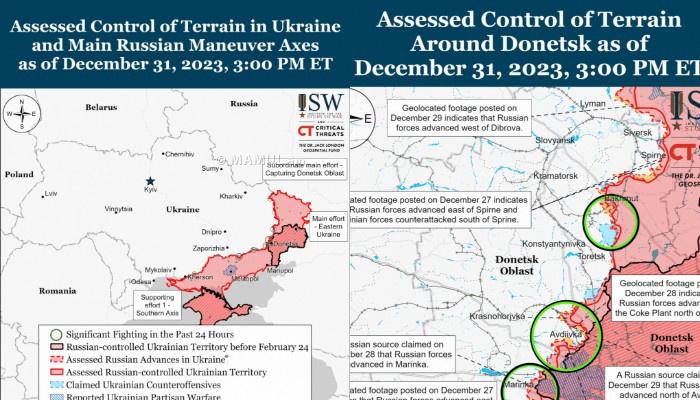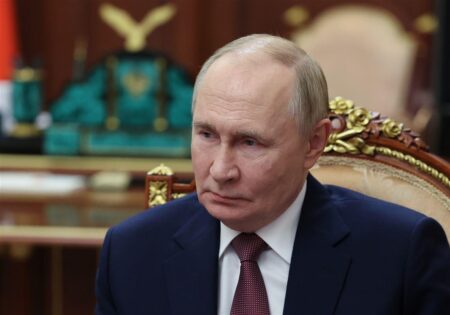The Institute for the Study of War (ISW) has released its latest analysis on the Russian offensive campaign as of June 9, 2025, offering a detailed assessment of recent military developments on the ground. This update sheds light on the evolving dynamics of the conflict, highlighting the strategic maneuvers, territorial changes, and operational challenges faced by Russian forces. As fighting continues to shape the security landscape in Eastern Europe, the ISW’s report provides critical insights for policymakers, analysts, and the international community monitoring the progression of hostilities.
Russian Forces Advance Amidst Strategic Setbacks in Eastern Ukraine
The latest phase in the eastern theater has seen Russian units making incremental gains despite facing significant operational challenges. Advancing primarily along key logistical corridors, Russian forces have begun to consolidate positions near pivotal urban centers. These efforts aim to tighten control over critical supply routes, though they continue to encounter fierce resistance from Ukrainian defense units employing asymmetric tactics. Intelligence reports indicate that Russian command is reallocating resources to bolster stalled advances, with an emphasis on mechanized infantry and artillery support.
However, strategic setbacks have emerged as Ukrainian forces successfully executed counterattacks disrupting enemy momentum. Supply chain vulnerabilities and morale issues are reported within certain Russian formations, complicating efforts to maintain offensive cohesion. Ukrainian defensive operations have capitalized on fortified terrain, leveraging drone reconnaissance and long-range precision strikes to weaken Russian forward elements. The following table summarizes recent key developments:
| Aspect | Russian Forces | Ukrainian Forces |
|---|---|---|
| Territorial Advances | Incremental gains near Lysychansk | Holding major defensive lines |
| Logistical Status | Supply delays and shortages reported | Efficient resupply via western corridors |
| Morale & Combat Effectiveness | Reports of fatigue and low morale | High motivation, elevated troop morale |
- Russian tactic shifts: Increased artillery barrages targeting Ukrainian strongpoints.
- Ukrainian response: Use of mobile anti-tank units in counter-offensive roles.
- Outlook: Continued attritional fighting expected with potential for localized breakthroughs.
Ukrainian Defenses Hold Key Urban Areas Against Prolonged Assaults
Ukrainian forces have demonstrated resilient defensive capabilities in several critical urban centers, effectively stalling Russian advances despite sustained artillery and ground offensives. Key cities such as Bakhmut, Avdiivka, and Marinka remain under firm Ukrainian control, largely due to well-coordinated counterattacks and reinforced fortifications within densely populated neighborhoods. The defenders have leveraged intricate trench networks and urban terrain to disrupt Russian mechanized units and infantry movements, inflicting disproportionate casualties. Moreover, local commanders have capitalized on extensive use of mobile anti-tank guided missiles and precise artillery strikes to blunt enemy momentum and protect vital supply routes.
Key defensive factors observed include:
- Entrenched positions in multi-story building complexes limiting Russian armor effectiveness
- Rapid redeployment of reserves to frontline sectors facing intense pressure
- Integrated use of drones for reconnaissance and targeting support
| Urban Area | Duration of Russian Assault (Days) | Estimated Russian Casualties | Ukrainian Countermeasures |
|---|---|---|---|
| Bakhmut | 45 | 1,200+ | Counterattacks, trench fortifications |
| Avdiivka | 30 | 850+ | Mobile ATGM squads, urban snipers |
| Marinka | 25 | 600+ | Drone-guided artillery strikes |
Recommendations for Strengthening Allied Support and Enhancing Intelligence Sharing
The evolving dynamics of the battlefield demand a recalibrated approach to allied cooperation and intelligence sharing, emphasizing interoperability and trust-building measures. To maximize impact, coalition partners must prioritize the integration of real-time data platforms that allow seamless access to tactical intelligence and battlefield assessments. Such systems should be designed with robust security protocols to mitigate infiltration risks while ensuring that actionable intelligence reaches frontline units promptly. Equally critical is enhancing joint training initiatives focused on intelligence interpretation and rapid decision-making to fortify operational cohesion across diverse military cultures.
Key strategies for advancing allied support include:
- Establishing centralized intelligence fusion centers equipped with AI-driven analytic tools.
- Standardizing communication protocols and data formats among partner nations.
- Implementing rotational advisory teams to strengthen cross-unit familiarity and rapport.
| Initiative | Expected Outcome | Timeline |
|---|---|---|
| Intelligence Fusion Centers | Streamlined data processing and dissemination | 3-6 months |
| Joint Training Programs | Improved operational synchronization | Ongoing |
| Rotational Advisory Teams | Enhanced trust and coordination | 6-12 months |
Complementing structural enhancements, it is imperative to cultivate a culture of transparency and reciprocal intelligence sharing among allies. This requires overcoming historical suspicions through consistent diplomatic engagement and confidence-building exercises. Furthermore, adopting adaptive intelligence methodologies-responsive to the fluid Russian offensive tactics-will enable quicker identification of emerging threats and shifting frontlines. Bridging intelligence gaps through joint reconnaissance missions and shared electronic warfare capabilities will be decisive in gaining the operational overmatch necessary for sustained superiority in the contested regions.
Final Thoughts
As the conflict continues to evolve, the latest assessment from the Institute for the Study of War underscores the complexity and volatility of the Russian offensive campaign as of June 9, 2025. Analysts emphasize that shifting frontlines, strategic recalibrations, and emerging tactical developments will require ongoing attention in the coming weeks. For policymakers and observers alike, staying informed through rigorous and timely updates remains essential to understanding the broader implications of this protracted conflict.



